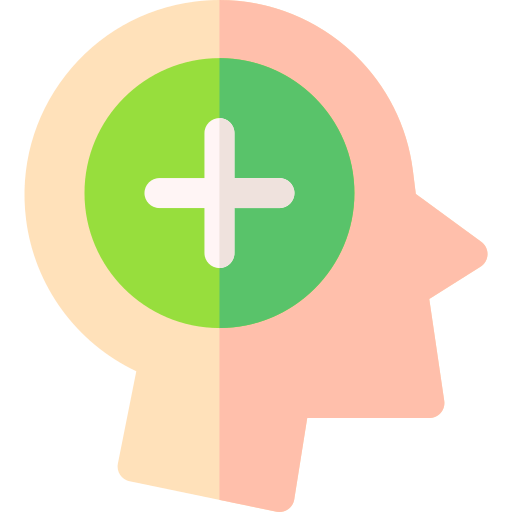Meaning Of Problem Solving
Basically, problem-solving is a soft skill and therefore the act of defining a controversy, determining the explanation for the problem; identifying, prioritizing, and selecting alternatives for an answer; and implementing a solution.
Whether you are going to solve a controversy for a client (external or internal), supporting those that are solving problems or discovering new problems to resolve, the issues you face may be large or small, simple or complex, and straightforward or difficult.
A fundamental part of every manager’s role is finding ways to resolve them. So, being a confident thinker is actually important to your success. Much of that confidence comes from having an honest process to use when approaching a controversy. With one, you’ll solve problems quickly and effectively. Without one, your solutions are also ineffective, or you will get stuck and do nothing, with sometimes painful consequences.

Problem Solving comprises of using generic and ad-hoc methods in a specific manner to search out solutions for the issues. It’s a noesis in psychology and a computerized process in technology.
Everybody can take pleasure in having good problem-solving skills as we all encounter problems on a day after day. A number of these problems are obviously more severe or complex than others.
It would be wonderful to own the flexibility to resolve all problems efficiently and in an exceedingly timely fashion only, unfortunately though there’s nobody way within which all problems will be solved.
Methods Of Problem-Solving
Problem-solving methods are the steps we use to search out solutions to problems and issues. Humans are naturally quite good at problem-solving, and that we often use sophisticated methods that we do not even know we’re using to undertake to urge to the solution. Learning about the methods will enable you to acknowledge the approaches you already use and identify other approaches that might be useful for you. Then, you’ll have several tools to assist you to strategize solutions to difficult problems.
1. Trial And Error
Trial and error could be a way of solving problems through repeated attempts, trying something different on every occasion until you’re successful. Although this approach sounds random, problem-solving through trial and error is efficient only if you’ll base your attempts on some prior knowledge and knowledge.
For example, a programmer employing a new language knows that quotes should surround pieces of text but is unsure whether that language uses single quotes or quotes. Instead of looking it up, it’ll be quicker just to undertake both (which would be the trial), since there are only two possibilities. If single quotes are incorrect (which would be an error), then the programmer will try again with an inverted comma.
But, if you have got no knowledge of how programming languages work on all, then you’re out of luck. No amount of fooling around with random bits of text is probably going to urge you to a working worm. So when there are unlimited, options, other problem-solving methods are sometimes best.
2. Difference Reduction
Difference reduction requires you to interrupt down an outsized task into smaller steps. The primary thing you are doing is ask yourself what step will take you from where you’re to as close as possible to the ultimate goal. You are taking that step and repeat the method until you finally reach the goal.
For example, if you would like to urge from the road to the within of your home, you may have to:
- Unlock the gate
- Swing open the gate
- Walk to the house
- Unlock the house
- Open the door
- Enter your home
Sometimes difference reduction isn’t the quickest thanks to getting to your goal – sometimes you have got to require one step backward to require a step forwards as an example, the step which will get you closest to being inside your home can be to run to the door. But if you’re locked out of the house, you may first visit the neighbor for the spare key.
3. Means-Ends Analysis
With means-ends analysis, you compare your current situation and also the situation you would like to attain, identify the foremost significant difference between those two situations, and so create a sub-goal to get rid of that difference.
If you would like to figure as a doctor, the foremost significant difference between where you’re and where you wish to have employment as a doctor – that is what would show a discrepancy in your life to form that happen. Gradually, you’ll come to the conclusion that you simply don’t yet have the knowledge or the degree necessary, but the most important difference in your actual life is that the job.
The means-ends analysis is less complicated to elucidate using examples. For example that your home is messy. Your goal is for it to be tidy.
Approach To Problem-Solving
1. Analytical Problem Solving

An analytical thinker has the flexibility to induce into the detail of a controversy, evaluate all components & perspectives to grasp it and determine what’s missing. They ask inquiries to fill in any gaps they see so as to foresee the next steps. they need confidence in their ability and make assumptions & decisions due to their constructive fact-finding process. Although their assumptions are credible & decisions well supported, they will not move quickly enough to an answer if they are doing not have all the facts. Because their fact-finding process takes time, they will not offer any opinions unless specifically asked.
2. Logical Problem Solving

A logical thinker has the power to continuously collect detail and put it into a sequence, allowing them to work out the large picture & evaluate where the matter exists and why. Then using historical data, they infer solutions supported similar situations. If this worked before in a very similar situation, it’ll work again during this one. The matter with inferring solutions supported past situations occurs when past situations don’t exist. When past situations are exhausted or a brand new solution is required, the logical convergent thinker could also be at a loss.
3. Rational Problem Solving

A rational thinker has the flexibility to require information that’s available & make assumptions supported that information, deducting the foremost optimal solution given their personal perspective. They may use the words “from my perspective here is that the problem and also the best approach to unravel it’s XYZ so as to attain what I think to be the simplest solution.” The matter is that although the approach is also rational for that individual, the start line of that reasoning could also be completely unjust to a different. Rational problem solvers often don’t see the planet from perspectives aside from their own.
4. Absolute Problem Solving

An absolute solver has the power to work out controversy as black or white and an answer as right or wrong. Absolute thinkers believe there’s a right way of doing something and if there’s an issue it’s because they’re unaware of the answer that exists. They fight to search out that solution by seeking an authoritative source that may confirm the solution. These individuals often have difficulty moving past an issue, they are doing not like making decisions without affirmation that they’re moving forward with an accepted approach. Absolute thinkers also tend to group their thoughts supported information that they need confidence in inferring an answer that worked elsewhere must add a parallel situation.
5. Creative Problem Solving

A creative solver has the flexibility to check several outcomes, make assumptions on what has to be done to realize an outcome & is willing to require risks because they need confidence in their own judgment. Creative thinkers start from scratch and don’t seem to be limited by steps or processes instead, they create unique paths and new solutions. The limitation of creative problem solving is usually that there’s no limit to the creative process. If an issue incorporates a deadline or budget constraint, creative thinkers may struggle because they need difficulty focusing and may lose sight of more obvious solutions.
6. Positive Problem Solving

A positive thinker has the flexibility to compartmentalize a controversy as a personal event and seek solutions with an open mind. Positive thinkers don’t seem to be restricted by fears or past results, instead, they predict improvement and are more hospitable finding ways of achieving it. Thus they listen for opportunities to boost and collaborate. The limitation of positive thinkers is that they will not hold situations or individuals accountable after they are required to try and do so. This makes it possible that problems reoccur several times before solutions are put in situ because they’re not pragmatic enough to unravel the problems.
Strategies
The following techniques are usually called problem-solving strategies-
1. Abstraction
Solving the matter in an exceedingly model of the system before applying it to the 000 system
2. Analogy
Employing a solution that solves an identical problem.
3. Brainstorming
(Especially among groups of people) suggesting an oversized number of solutions or ideas and mixing and developing them until an optimum solution is found.
4. Divide And Conquer
Breaking down an oversized, complex problem into smaller, solvable problems.
5. Hypothesis Testing
Assuming an explanation that is possible to the matter and trying to prove (or, in some contexts, disprove) the belief.
6. Lateral Thinking
Approaching solutions indirectly and creatively.
7. Means-Ends Analysis
Choosing an action at each step to maneuver closer to the goal.
8. Morphological Analysis
Assessing the output and interactions of a whole system.
9. Proof
Try and prove that the matter can’t be solved. the purpose where the proof fails is the place to begin for solving it.
10. Reduction
Transforming the matter into another problem that solutions exist.
a) Research
Employing existing and creative ideas or adapting existing solutions to solve similar problems.
b) Root cause analysis
Identifying the explanation for a controversy.
c) Trial-and-error
Testing possible solutions until the correct one is found.
Frequently Asked Questions-
Ans. Problem-solving is very important both to individuals and organizations because it enables us to exert control over our surroundings. … Problem-solving gives us a mechanism for identifying these items, determining why they’re broken, and determining a course of action to mend them.
Ans. Problem Solving and Analysis Tools. There are tools required to facilitate the method of problem-solving, including root cause analysis and corrective action. It could be a problem-solving tool that explains the rationale process for locating the possible root explanation for the matter.
Ans. Use these ten creative tips to boost problem-solving skills, develop more strategic ways of thinking, and train your brain to try and do more.
1. Dance Your Heart Out.
2. Work out Your Brain with Puzzles or Games.
3. Get an honest and comfortable Night’s Sleep.
4. Work out to Some Tune ins.
5. Always Keep an “Idea Journal” with You.
6. Participate in Yoga and exercise.
Ans. Some key problem-solving skills include:
1. Active listening
2. Analysis
3. Research
4. Creativity
5. Communication
6. Dependability
7. Decision making
Ans. Steps in Problem Solving Process are:
1 Define the Problem
2 Clarify the Problem
3 Define the Goals
4 Identify the main Causes of the Problem
5 Develop an Action Plan
6 Execute Action Plan
7 Evaluate the Results
8 Continuously Improve


Pingback: Interpersonal Communication Skills | ThinkersPoint
Pingback: Teamwork | Importance of Teamwork | Soft Skills | Thinkerspoint
Pingback: Soft Skills | Importance of soft Skills | Thinkerspoint